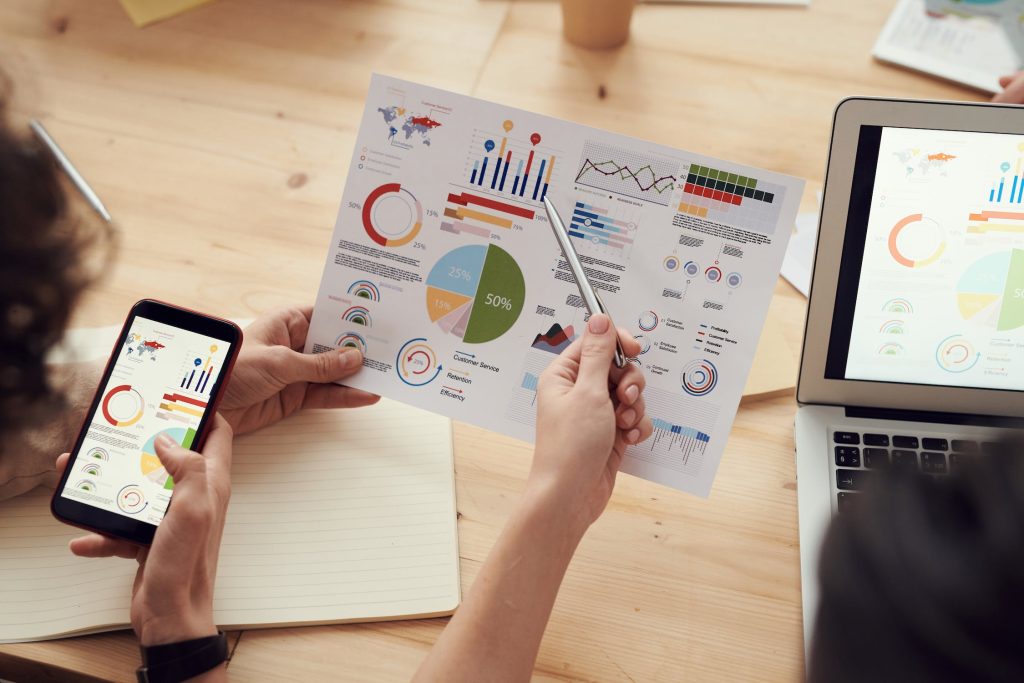How a Consumer Analysis Report Can Transform Your Business Strategy
In the ever-expanding universe of choices, the voices of consumers resonate louder than a rock concert — and for good reason. As businesses jockey for position in today’s crowded marketplace, understanding the nuances of consumer behavior has shifted from a luxury to a necessity. Enter the Consumer Analysis Report. Think of it as your business’s trusty compass, distilling a sea of consumer data into actionable insights that can guide you through uncharted waters. So, how can a comprehensive consumer analysis breathe new life into your business strategy? Let’s embark on this journey and explore why getting to know your consumers can be the cornerstone of smarter business tactics.
First, let’s talk about the changing nature of consumer behavior. Today’s shopper isn’t just informed; they’re practically loaded with knowledge, thanks to social media, peer reviews, and endless online resources. Remember the 2021 survey by McKinsey? It reported that nearly 70% of consumers altered their shopping habits during the pandemic. This isn’t just a trend; it’s a seismic shift influenced by everything from health concerns to social movements. I often chat with entrepreneurs who express frustration over their inability to predict customer desires. The answer? A thorough dive into consumer analysis, a tool that can demystify seemingly baffling trends and preferences. I mean, take Nike as a case-in-point. They pivoted like pros during the pandemic, using their in-depth understanding of consumer behavior to tweak marketing strategies and revamp product lines.
The Anatomy of a Consumer Analysis Report
So, what’s inside a consumer analysis report? Here are a few key components that can help shine a light on your consumers:
Demographic Insights
Let’s face it: knowing who your customers are is the bedrock of any solid business strategy. Demographics encompass age, gender, income, education level, and where your consumers live. This rich data can help you segment your target market effectively, allowing you to tailor messages that actually resonate. Think about cosmetics brands—their marketing often zeroes in on specific age groups with specialized product lines. Sephora, for instance, has nailed personalized recommendations by cleverly leveraging demographic insights, making the shopping experience feel tailored just for you.
Psychographic Profiling
If demographics answer the “who,” psychographics dig deeper into the “why.” This realm reveals consumer interests, values, lifestyles, and motivations. Brands like Patagonia have harnessed this insight to connect with eco-conscious shoppers by pairing their products with a strong environmental message. This goes beyond mere sales; it’s about forming emotional ties that can stick like glue, outlasting even the most competitive pricing strategies.
Behavioral Patterns
Diving into consumer behavior means analyzing shopping habits, brand loyalty, and responses to marketing campaigns. Want to see how customers interact with your website? Google Analytics can shine a spotlight on user navigational paths and where they drop off. For retailers, these insights could signal a need for an upgrade in user experience design or spotlight which products are creating the most buzz. Essentially, the data tells a story; the challenge lies in unraveling its plotline.
Competitive Analysis
Every business operates in a dynamic battlefield, and understanding your competitors is crucial. Knowing their strengths and weaknesses can reveal opportunities for market positioning. Take Warby Parker, for instance. In its infancy, it took a close look at established competitors like Luxottica and identified a gap in direct-to-consumer pricing, effectively creating and thriving in its unique niche.
Trend Forecasting
Last but not least, a robust consumer analysis report should also include trend forecasting. Interpreting current data and historical patterns can help businesses anticipate future consumer needs, shaping strategies proactively rather than reactively. Look at Dollar Shave Club; they transformed the shaving landscape by seizing on a consumer demand for convenience and affordability, shaking things up in an industry that was begging for innovation.
The Necessity of a Consumer Analysis Report
So, why is all this mumbo jumbo about consumer analysis not just a nice-to-have but an absolute must? The answer is simple: informed decision-making. As business leaders, navigating choices can sometimes feel like driving in fog; a consumer analysis report can cut through that haze with tangible data, illuminating a clear path forward.
Picture this: you’re running a multichannel retail operation, and you can’t quite figure out which platform yields the best return on investment. By analytically dissecting consumer engagement across channels, you might uncover which platforms attract specific demographics — and some hidden treasure is just waiting to be discovered. Without this insight, you might waste valuable resources on low-performing platforms while potentially lucrative opportunities slip through your fingers.
Real-World Applications: Insights on Demand
The beauty of consumer analysis is its keen adaptability across industries. Starbucks is a perfect example. Using advanced data analysis tools, they really get to know their customers. Their app collects insights into purchasing patterns and even customizable drink preferences. This information informs everything from seasonal product launches to personalized marketing blitzes, fostering deep customer engagement and serious brand loyalty.
And in the B2B realm, consumer analysis is equally transformative. Take HubSpot, a software company that utilizes meticulous data analysis to segment users. By understanding valued features and client engagement, they can tailor support and resources, enhancing user experiences and creating a classic win-win.
Challenges of Consumer Analysis Reports
But let’s not sugarcoat it; navigating the world of consumer analysis has its share of challenges. Data overload can lead to confusion, and with all those numbers flying around, those meaningful insights can sometimes feel like finding a needle in a haystack. Businesses must prioritize and sift through this data to pinpoint those golden nuggets of intelligence. Data visualization tools can help make the findings accessible and digestible—no one wants to feel lost in the data jungle.
And, of course, privacy is a big deal nowadays. As consumers become more aware of data collection practices, businesses need to tread carefully, balancing the fine line between obtaining insights and ensuring ethical practices. Transparency, consent, and robust security measures are vital to maintaining that ever-valuable consumer trust. The bottom line? Satisfied consumers often translate to loyal customers.
Actionable Strategies for Elevating Your Business
Collecting data isn’t where the fun ends; it’s just the start! Here’s how to flip insights from your Consumer Analysis Report into actionable strategies that revitalize your business:
Customize Marketing Strategies
Leverage insights from your data to craft personalized marketing campaigns. If you discover that certain segments of your customer base value sustainability, why not highlight your eco-friendly practices in your messaging? Tailored email blasts that speak to specific interests can significantly ramp up engagement and conversion rates.
Innovate Product Offerings
Use consumer behavior insights to inspire your product development. If you notice a growing trend in plant-based diets, it might be time to expand your product line to include plant-based alternatives. Being in tune with what consumers want allows for innovation that resonates rather than throwing spaghetti at the wall just to see what sticks.
Build Stronger Customer Relationships
When you know your consumers’ pain points and preferences, you unlock a treasure trove of opportunities for better engagement. Use feedback from consumer analysis to tweak customer service, enhance user interfaces, or streamline purchasing processes. When customers feel valued, guess what? They’re a lot more likely to stick around.
Fine-Tune Pricing Strategies
By studying behavioral patterns and purchasing frequencies, you can glean insights into pricing elasticity and perceived value. This knowledge empowers you to develop dynamic pricing strategies that align with consumer expectations. Think of how airlines often adjust ticket prices based on demand; this approach can be adapted across numerous industries!
Stay Ahead of Trends
In a rapidly changing market, keeping your finger on the pulse is crucial. By leveraging historical trends and the insights gathered from consumer analysis, you can not only anticipate shifts but also adjust your offerings accordingly. This foresight might just be the difference between thriving and barely surviving.
Final Thoughts
As we find ourselves at the crossroads of data and decision-making, one truth stands resolute: a meticulously crafted Consumer Analysis Report can be a game-changing asset for any business leader. From pinpointing demographic specifics to diving into the depths of psychographic understanding, the insights derived from consumer behavior can redefine how you shape strategies and take action, ultimately driving your business forward.
In a marketing landscape that’s increasingly crowded and chaotic, the ability to pivot based on data-driven insights is no longer optional — it’s essential. Whether you’re steering a Fortune 500 company or launching a startup from your garage, weaving consumer analysis into your ongoing strategy fosters resilience and adaptability in an unpredictable world.
So, the next time you ponder your business strategy over coffee, ask yourself: What do my consumers truly want? Diving into that question—armed with a well-oiled Consumer Analysis Report—may just illuminate a path to extraordinary success.




